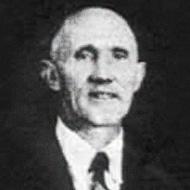


"A MEETING of those favourable to the "Association" game of football as played in the home countries was held at the Australian Hotel last night [Thursday 1 May] ... The chair was occupied by Mr. W. McLauchlan. Among those present were a number of Scottish Association footballers who had recently arrived in the colony ... [I]t was resolved that it was desirable to form an Anglo-Queensland Football Association, and as a beginning the meeting formed the first club, the name selected being "St. Andrew's Football Club." Mr. D. McCreadie - a Queen's Park (Glasgow) player was elected president and captain of the club .."
Middlebrook and Wordie, J. and W. Cairns, Anderton and Millar, the captain, Rankine, Allison, Russell, Irvine and Gemmell
can read that the match was refereed according to the convention of the time, with an umpire from each side on the pitch and the referee in the stand, know the Queen's Park team was,"The first match under the auspices of the Anglo-Queensland Football Association took place on the Pineapple Ground, Kangaroo Point on Saturday, the contending clubs being the Queen's Park and St Andrew's. The clubs played eleven aside, being the usual number in matches under this association. The colours were-for St Andrews dark blue and for Queen's Park blue and white. Mr Shiers was umpire for the Queen's Park, and Mr Curry filled the same position for the other side, Mr Hudson being referee. The attendance numbered about sixty, and most of them took a lively interest in the game."
Brooks, Wearne (backs); Pywell, Copp (half-backs), Pearson, Holland (centre forwards), Bell, Allison (left wing), Sharp, Princeps (captain, right wing), J. Wharrie (goal),
that St. Andrew's included,
R. Wylie, the captain, McCreadie, presumably D. McCreadie, Menzies, Kyle, Currie and Angus
